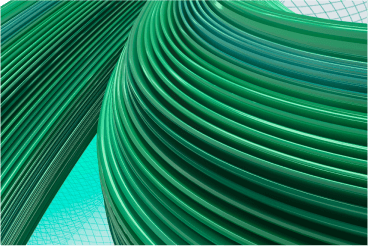How a New Technology Add-On Payment (NTAP) Works
Summary
Additional Medicare payment in the inpatient setting may be available to certain qualifying new technologies, but requires successful navigation of application processes.Under the Inpatient Prospective Payment System (IPPS), Medicare pays for a patient’s inpatient hospital stay under a bundled payment, which covers all costs of acute care services performed. Examples of costs include those for room and board, operating room time, supplies, radiology, nursing, and laboratory services. Although this bundled payment covers most drugs, devices, and supplies, certain qualifying products are also eligible for additional payment via the new technology add-on payment (NTAP) designation.
For products that meet specified criteria, the Centers for Medicare and Medicaid Services (CMS) may provide additional payment. An NTAP designation enables additional payment to hospitals above the standard Medicare Severity Diagnosis-Related Group (MS-DRG) payment amount. A product’s NTAP designation lasts for no more than three years for a specific indication. Typically, a technology must meet three criteria to qualify for NTAP:
- Newness: A technology is considered new until claims data reflecting the use of the technology have become available (typically up to three years after Food and Drug Administration [FDA] approval). The technology must also not be “substantially similar” to any existing technology.
- Cost: The technology must be determined to be inadequately paid under the existing MS-DRG system, meaning that the average standardized charge for inpatient cases using the technology exceeds the cost threshold.
- Substantial Clinical Improvement: Use of the technology must significantly improve clinical outcomes for a specified patient population, compared to currently available treatments. Clinical data must be either specific to or generalizable to Medicare patient population.
CMS recently created alternative NTAP approval pathways for certain technologies. Devices that obtain breakthrough designation and drugs that obtain qualified infectious disease product designation from the FDA need only meet the cost criterion because CMS assumes that those products meet the newness and substantial clinical improvement criteria.
The NTAP application process takes place on an annual basis, where CMS reviews applications and decides whether or not to award this payment designation as part of its annual IPPS rulemaking cycle. NTAP applications for a given fiscal year are due the October before that fiscal year begins.
Having supported more than a dozen successful applications during the past decade, Avalere Health’s experts understand the NTAP process and can offer the following services to manufacturers:
- Provide an NTAP primer explaining the process, key internal stakeholder involvement, timelines, and case studies of successful, similar technologies
- Assess cost feasibility to determine a technology’s likelihood of meeting the cost criterion
- Assess a technology’s ability to meet the newness and clinical improvement criteria (e.g., by reviewing clinical evidence)
- Draft and submit the NTAP application, including the cost-threshold analysis
- Prepare clients for the CMS’s annual NTAP town hall meeting and schedule pre-submission informational sessions with CMS to seek clarification on specific evidence requirements
- Create and submit the International Classification of Diseases, 10th Revision, Procedural Coding System (ICD-10-PCS) code request and prepare the client for ICD-10 Coordination and Maintenance Committee meeting as necessary
- Draft the IPPS proposed comment letter for submission as needed
The NTAP application process—as shown in the expected Fiscal Year (FY) 2027 timeline below—requires submission of the application in October (note: the full FY 2027 timeline has not yet been published). Given the cost analyses and clinical information required as part of this application, manufacturers should begin working on their NTAP applications now.
Table 1. Potential Activities and Anticipated Timeline for FY 2027 NTAP Application Cycle
| NTAP Activity | Timeline |
|---|---|
| Assess Technology’s Ability to Meet NTAP Criteria | Aug 2025 |
| Prepare NTAP Application | Aug–Sep 2025 |
| Submission Deadline for NTAP Application | Oct 2025 |
| Prepare ICD-10-PCS Request | Nov 2025 |
| Develop Town Hall Presentation | Nov 2025* |
| Present at New Technology Town Hall | Dec 2025 |
| Submit ICD-10-PCS Code Request | Dec 2025 |
| Submit Additional NTAP Application Information | Dec 2025 |
| Develop ICD-10-PCS Presentation | Jan 2026 |
| Present at ICD-10 Coordination & Maintenance Committee Meeting | Mar 2026 |
| IPPS Proposed Rule Released | Apr 2026 |
| FDA Approval Deadline | May 1, 2026 |
| Submit IPPS Comment letter | Jun 2026** |
| IPPS Final Rule Released | Aug 2026 |
| If Awarded, NTAP Effective | Oct 1, 2026*** |
*The New Technology Town Hall’s purpose is to present information regarding the clinical improvement criteria. As alternative pathway applicants must only meet the cost criteria, these applicants need not attend the town hall. **A comment letter may not be needed for those applying through the alternative pathway because CMS will provide conditional approval of the NTAP in the IPPS proposed rule. ***Technologies approved via the alternative pathway with proposed conditional approval will have NTAP effective the quarter after FDA approval
Connect with us to learn from our NTAP and inpatient reimbursement expertise.
.







